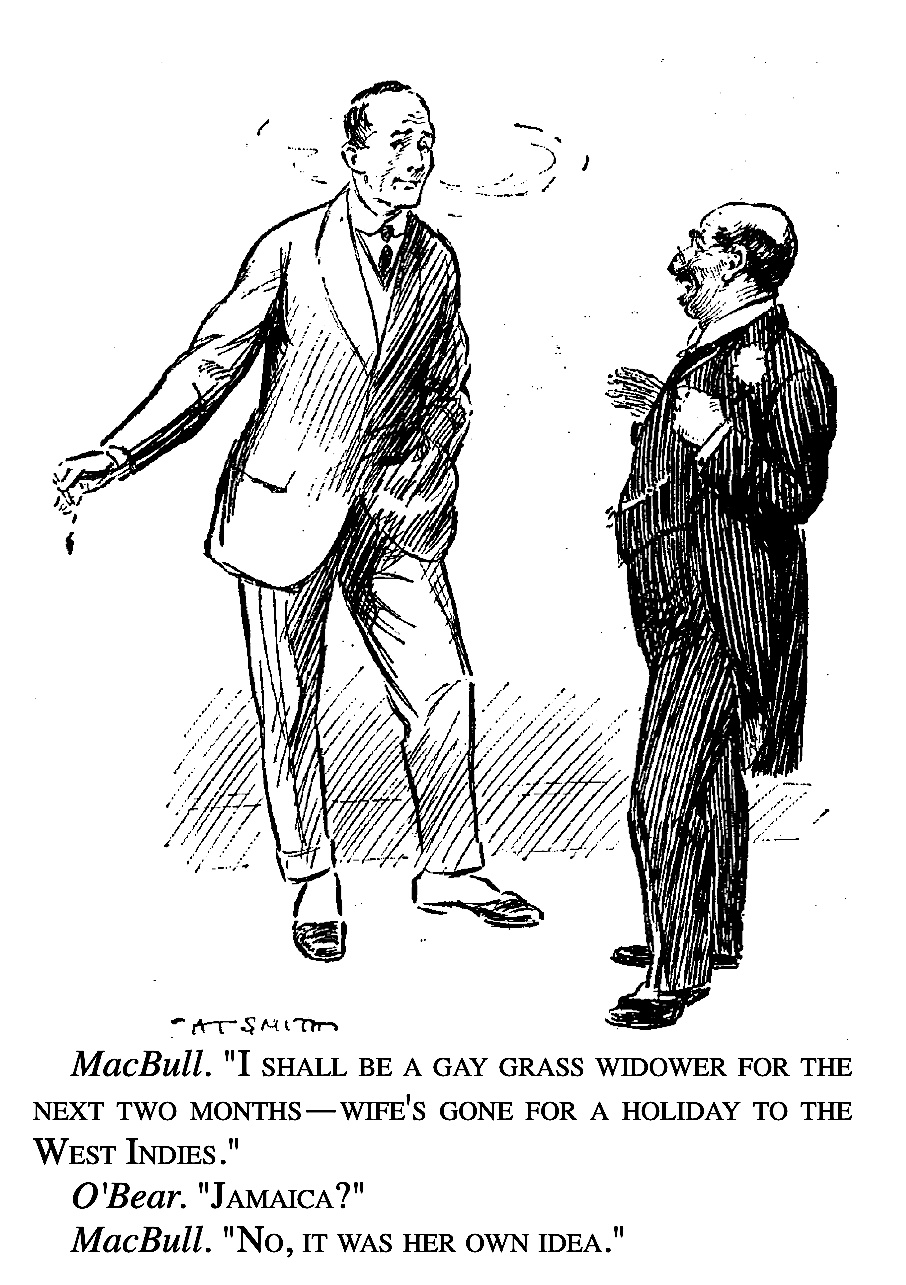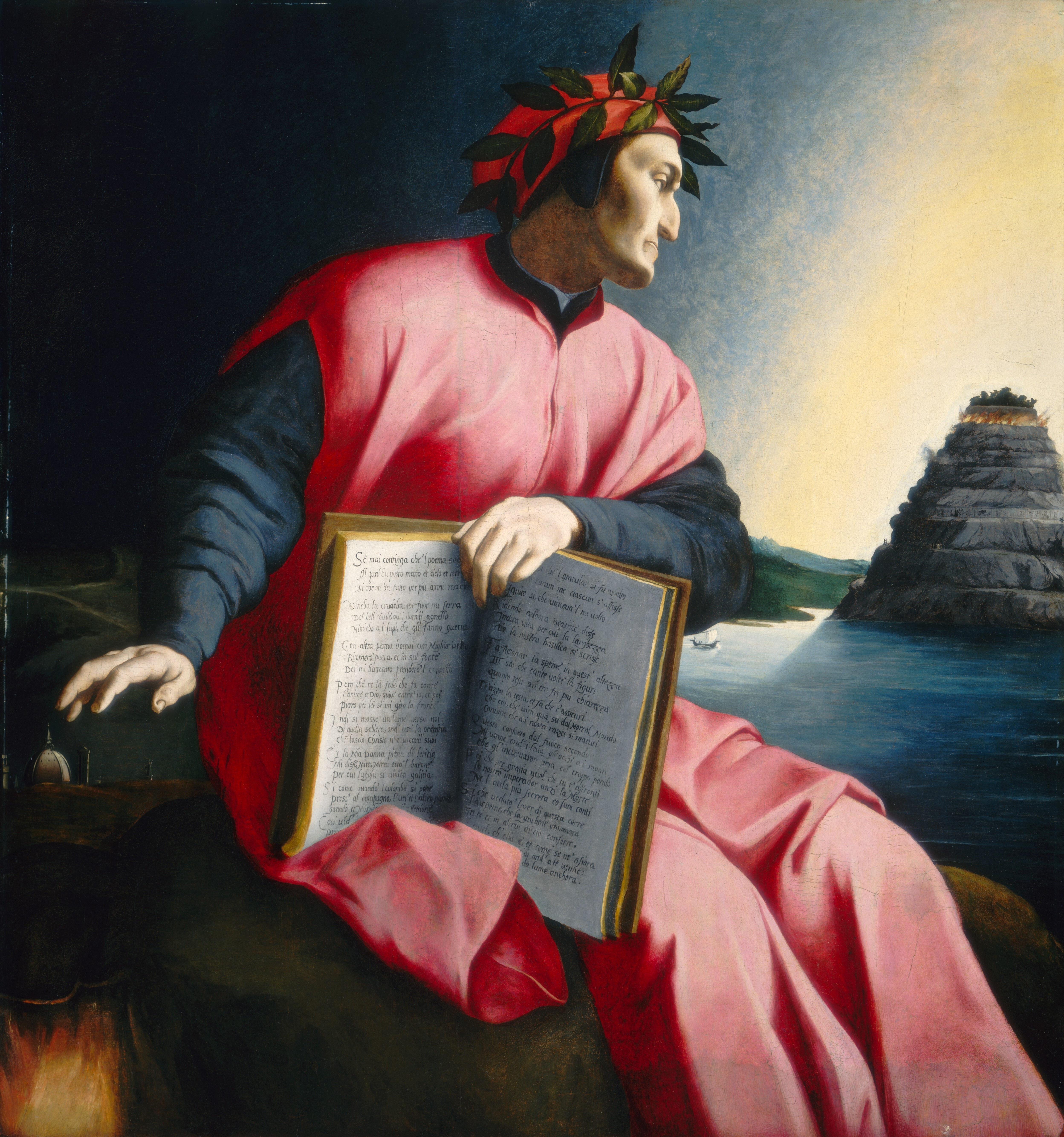|
Aposiopesis
Aposiopesis (; Classical Greek: ἀποσιώπησις, "becoming silent") is a figure of speech wherein a sentence is deliberately broken off and left unfinished, the ending to be supplied by the imagination, giving an impression of unwillingness or inability to continue. An example would be the threat "Get out, or else—!" This device often portrays its users as overcome with passion (fear, anger, excitement) or modesty. To mark the occurrence of aposiopesis with punctuation, an em-rule (—) or an ellipsis (...) may be used. Examples * One classical example of aposiopesis in Virgil occurs in Aeneid 1.135. Neptune, the Roman god of the Sea, is angry with the winds, whom Juno released to start a storm and harass the Trojan hero and protagonist Aeneas. Neptune berates the winds for causing a storm without his approval, but breaks himself off mid-threat: *Another example in Virgil occurs in the ''Aeneid'' 2.100. Sinon, the Greek who is posing as a defector to deceive the ... [...More Info...] [...Related Items...] OR: [Wikipedia] [Google] [Baidu] |
Ellipsis
The ellipsis (, plural ellipses; from , , ), rendered , alternatively described as suspension points/dots, points/periods of ellipsis, or ellipsis points, or colloquially, dot-dot-dot,. According to Toner it is difficult to establish when the "dot dot dot" phrase was first used. There is an early instance, which is perhaps the first in a piece of fiction, in Virginia Woolf's short story "An Unwritten Novel" (1920). is a punctuation mark consisting of a series of three dots. An ellipsis can be used in many ways, such as for intentional omission of text or numbers, to imply a concept without using words. Style guides differ on how to render an ellipsis in printed material. Style Opinions differ on how to render an ellipsis in printed material and are to some extent based on the technology used for rendering. According to '' The Chicago Manual of Style'', it should consist of three periods, each separated from its neighbor by a non-breaking space: . According to the '' AP ... [...More Info...] [...Related Items...] OR: [Wikipedia] [Google] [Baidu] |
Figure Of Speech
A figure of speech or rhetorical figure is a word or phrase that intentionally deviates from straightforward language use or Denotation, literal meaning to produce a rhetorical or intensified effect (emotionally, aesthetically, intellectually, etc.). In the distinction between literal and figurative language, figures of speech constitute the latter. Figures of speech are traditionally classified into ''scheme (linguistics), schemes'', which vary the ordinary sequence of words, and ''trope (literature), tropes'', where words carry a meaning other than what they ordinarily signify. An example of a scheme is a polysyndeton: the repetition of a conjunction before every element in a list, whereas the conjunction typically would appear only before the last element, as in "Lions and tigers and bears, oh my!"—emphasizing the danger and number of animals more than the Prose, prosaic wording with only the second "and". An example of a trope is the metaphor, describing one thing as someth ... [...More Info...] [...Related Items...] OR: [Wikipedia] [Google] [Baidu] |
Ancient Greek
Ancient Greek (, ; ) includes the forms of the Greek language used in ancient Greece and the classical antiquity, ancient world from around 1500 BC to 300 BC. It is often roughly divided into the following periods: Mycenaean Greek (), Greek Dark Ages, Dark Ages (), the Archaic Greece, Archaic or Homeric Greek, Homeric period (), and the Classical Greece, Classical period (). Ancient Greek was the language of Homer and of fifth-century Athens, fifth-century Athenian historians, playwrights, and Ancient Greek philosophy, philosophers. It has contributed many words to English vocabulary and has been a standard subject of study in educational institutions of the Western world since the Renaissance. This article primarily contains information about the Homeric Greek, Epic and Classical periods of the language, which are the best-attested periods and considered most typical of Ancient Greek. From the Hellenistic period (), Ancient Greek was followed by Koine Greek, which is regar ... [...More Info...] [...Related Items...] OR: [Wikipedia] [Google] [Baidu] |
Henry Wadsworth Longfellow
Henry Wadsworth Longfellow (February 27, 1807 – March 24, 1882) was an American poet and educator. His original works include the poems " Paul Revere's Ride", '' The Song of Hiawatha'', and '' Evangeline''. He was the first American to completely translate Dante Alighieri's ''Divine Comedy'' and was one of the fireside poets from New England. Longfellow was born in Portland, District of Maine, Massachusetts (now Portland, Maine). He graduated from Bowdoin College and became a professor there and, later, at Harvard College after studying in Europe. His first major poetry collections were ''Voices of the Night'' (1839) and ''Ballads and Other Poems'' (1841). He retired from teaching in 1854 to focus on his writing, and he lived the remainder of his life in the Revolutionary War headquarters of George Washington in Cambridge, Massachusetts. His first wife, Mary Potter, died in 1835 after a miscarriage. His second wife, Frances Appleton, died in 1861 after sustaining burns ... [...More Info...] [...Related Items...] OR: [Wikipedia] [Google] [Baidu] |
Divine Comedy
The ''Divine Comedy'' (, ) is an Italian narrative poetry, narrative poem by Dante Alighieri, begun and completed around 1321, shortly before the author's death. It is widely considered the pre-eminent work in Italian literature and one of the greatest works of Western literature. The poem's imaginative vision of the afterlife is representative of the medieval philosophy, medieval worldview as it existed in the Western Christianity, Western Church by the 14th century. It helped establish the Tuscan dialect, Tuscan language, in which it is written, as the standardized Italian language. It is divided into three parts: ''Inferno (Dante), Inferno'', ''Purgatorio'', and ''Paradiso (Dante), Paradiso''. The poem explores the condition of the soul following death and portrays a vision of divine justice, in which individuals receive appropriate punishment or reward based on their actions.Vallone, Aldo. "Commedia" (trans. Robin Treasure). In: Lansing (ed.), ''The Dante Encyclopedia'', ... [...More Info...] [...Related Items...] OR: [Wikipedia] [Google] [Baidu] |
Dante Alighieri
Dante Alighieri (; most likely baptized Durante di Alighiero degli Alighieri; – September 14, 1321), widely known mononymously as Dante, was an Italian Italian poetry, poet, writer, and philosopher. His ''Divine Comedy'', originally called (modern Italian: ) and later christened by Giovanni Boccaccio, is widely considered one of the most important poems of the Middle Ages and the greatest literary work in the Italian language. Dante chose to write in the vernacular, specifically, his own Tuscan dialect, at a time when much literature was still written in Latin, which was accessible only to educated readers, and many of his fellow Italian poets wrote in French or Provençal dialect, Provençal. His ' (''On Eloquence in the Vernacular'') was one of the first scholarly defenses of the vernacular. His use of the Florentine dialect for works such as ''La Vita Nuova, The New Life'' (1295) and ''Divine Comedy'' helped establish the modern-day standardized Italian language. His wo ... [...More Info...] [...Related Items...] OR: [Wikipedia] [Google] [Baidu] |
Romeo And Juliet
''The Tragedy of Romeo and Juliet'', often shortened to ''Romeo and Juliet'', is a Shakespearean tragedy, tragedy written by William Shakespeare about the romance between two young Italians from feuding families. It was among Shakespeare's most popular plays during his lifetime and, along with ''Hamlet'', is one of his most frequently performed. Today, the Title character, title characters are regarded as Archetype, archetypal young lovers. ''Romeo and Juliet'' belongs to a tradition of tragic Romance (love), romances stretching back to Ancient history, antiquity. The plot is based on an Italian tale written by Matteo Bandello, translated into verse as ''The Tragical History of Romeus and Juliet'' by Arthur Brooke (poet), Arthur Brooke in 1562, and retold in prose in ''Palace of Pleasure'' by William Painter (author), William Painter in 1567. Shakespeare borrowed heavily from both but expanded the plot by developing a number of supporting characters, in particular Mercutio a ... [...More Info...] [...Related Items...] OR: [Wikipedia] [Google] [Baidu] |
Romeo
Romeo Montague () is the male protagonist of William Shakespeare's tragedy ''Romeo and Juliet''. The son of Characters in Romeo and Juliet#Lord Montague, Lord Montague and his wife, Characters in Romeo and Juliet#Lady Montague, Lady Montague, he secretly loves and marries Juliet, a member of the rival House of Capulet, through a priest named Friar Laurence. Forced into exile after slaying Juliet's cousin, Tybalt, in a duel, Romeo dies by suicide upon hearing falsely of Juliet's death. The character's origins can be traced as far back as Pyramus, who appears in Ovid's ''Metamorphoses'', but the first modern incarnation of Romeo is Mariotto in the 33rd of Masuccio Salernitano's ''Il Novellino'' (1476). This story was reworked in 1524 by Luigi da Porto as ''Giulietta e Romeo'' (published posthumously in 1531). Da Porto named the character Romeo Montecchi, and the storyline is nearly the same as Shakespeare's adaptation. Since no 16th-century direct English translation of ''Giuliett ... [...More Info...] [...Related Items...] OR: [Wikipedia] [Google] [Baidu] |
Queen Mab
Queen Mab is a fairy referred to in William Shakespeare's play ''Romeo and Juliet'', in which the character Mercutio famously describes her as "the fairies' midwife", a miniature creature who rides her chariot (which is driven by a team of atom-sized creatures) over the bodies of sleeping humans during the nighttime, thus helping them "give birth" to their dreams. Later depictions in other poetry and literature and various guises in drama and cinema have typically portrayed her as the Queen of the Fairies. Origin Shakespeare may have borrowed the character of Mab from folklore, but this is debated and there have been numerous theories on the origin of the name. A popular theory holds that Mab derives from Medb (pronounced "Maive"), a legendary queen from 12th-century Irish poetry; scholar Gillian Edwards notes "little resemblance", however, between the two characters. There is marked contrast between the formidable warrior Medb and the tiny dream-bringer Mab. Other authors ... [...More Info...] [...Related Items...] OR: [Wikipedia] [Google] [Baidu] |
Mercutio
Mercutio ( , ) is a fictional character in William Shakespeare's 1597 tragedy, ''Romeo and Juliet''. He is a close friend to Romeo and a blood relative to Prince Escalus and Count Paris. As such, Mercutio is one of the named characters in the play with the ability to mingle around those of both houses. The invitation to Lord Capulet's party states that he has a brother named Valentine. Though often fun-loving and witty, the latter demonstrated in his Queen Mab speech in the first act, Mercutio's sense of humour can at times be facetious or even coarse, much to his friends' annoyance. He is also moody and given to sudden outbursts of temper, one of which sets a key plot development in motion. Role in the play One of Romeo's closest friends, Mercutio entreats Romeo to forget about his unrequited love for a girl named Rosaline and come with him to a masquerade ball at Lord Capulet's estate, through use of his Queen Mab speech. There, Mercutio and his friends become the life ... [...More Info...] [...Related Items...] OR: [Wikipedia] [Google] [Baidu] |
King Lear
''The Tragedy of King Lear'', often shortened to ''King Lear'', is a Shakespearean tragedy, tragedy written by William Shakespeare. It is loosely based on the mythological Leir of Britain. King Lear, in preparation for his old age, divides his power and land between his daughters Goneril and Regan (King Lear), Regan, who pay homage to gain favour, feigning love. The King's third daughter, Cordelia (King Lear), Cordelia, is offered a third of his kingdom also, but refuses to be insincere in her praise and affection. She instead offers the respect of a daughter and is disowned by Lear who seeks flattery. Regan and Goneril subsequently break promises to host Lear and his entourage, so he opts to become homeless and destitute, and goes insane. The French King married to Cordelia then invades Britain to restore order and Lear's rule. In a subplot, Edmund, the illegitimate son of the Earl of Gloucester, betrays his brother and father. Tragically, Lear, Cordelia and several other main ... [...More Info...] [...Related Items...] OR: [Wikipedia] [Google] [Baidu] |
William Shakespeare
William Shakespeare ( 23 April 1564 – 23 April 1616) was an English playwright, poet and actor. He is widely regarded as the greatest writer in the English language and the world's pre-eminent dramatist. He is often called England's national poet and the "Bard of River Avon, Warwickshire, Avon" or simply "the Bard". His extant works, including William Shakespeare's collaborations, collaborations, consist of some Shakespeare's plays, 39 plays, Shakespeare's sonnets, 154 sonnets, three long narrative poems and a few other verses, some of uncertain authorship. His plays List of translations of works by William Shakespeare, have been translated into every major modern language, living language and are performed more often than those of any other playwright. Shakespeare remains arguably the most influential writer in the English language, and his works continue to be studied and reinterpreted. Shakespeare was born and raised in Stratford-upon-Avon, Warwickshire. At the age of 18 ... [...More Info...] [...Related Items...] OR: [Wikipedia] [Google] [Baidu] |





